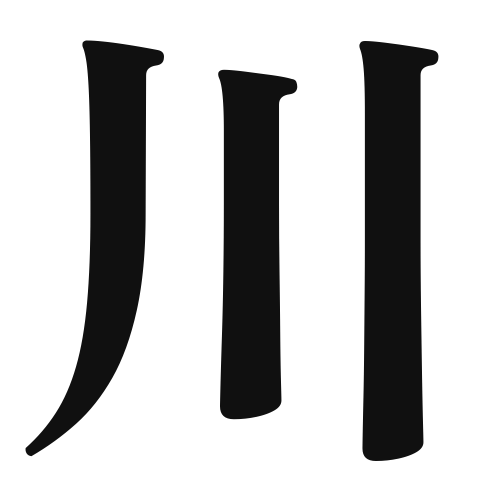1. Overview of Meaning
The kanji “川” (kawa) means “river” in Japanese. It represents a flowing body of water, often associated with nature and landscapes.
2. Formation and Radical
The kanji “川” is a pictogram, which means it visually represents what it signifies. The character resembles the flowing shape of a river. The radical for “川” is also “川,” which is used in other kanji related to water and rivers.
3. Examples of Usage
Common words and phrases that include “川” are:
- 川岸 (kawagishi) – riverbank
- 川遊び (kawaasobi) – playing in the river
Example sentence in daily conversation:
今日は川に行って、泳ぎたいです。 (Kyō wa kawa ni itte, oyogitai desu.) – “I want to go to the river and swim today.”
4. Synonyms and Antonyms
Similar kanji with related meanings include:
- 水 (mizu) – water, which is the essential element of rivers but does not specifically refer to the flowing body.
Antonyms include:
- 山 (yama) – mountain, which represents elevated land, contrasting with the low-lying nature of rivers.
5. Cultural and Historical Background
The kanji “川” is deeply connected to Japanese culture, as rivers are vital for agriculture, transportation, and recreation. In Japanese proverbs and idioms, rivers often symbolize the flow of life or the passage of time.
For example, the saying 「川の流れのように」 (kawa no nagare no yō ni) translates to “like the flow of a river,” indicating the natural progression of life.
